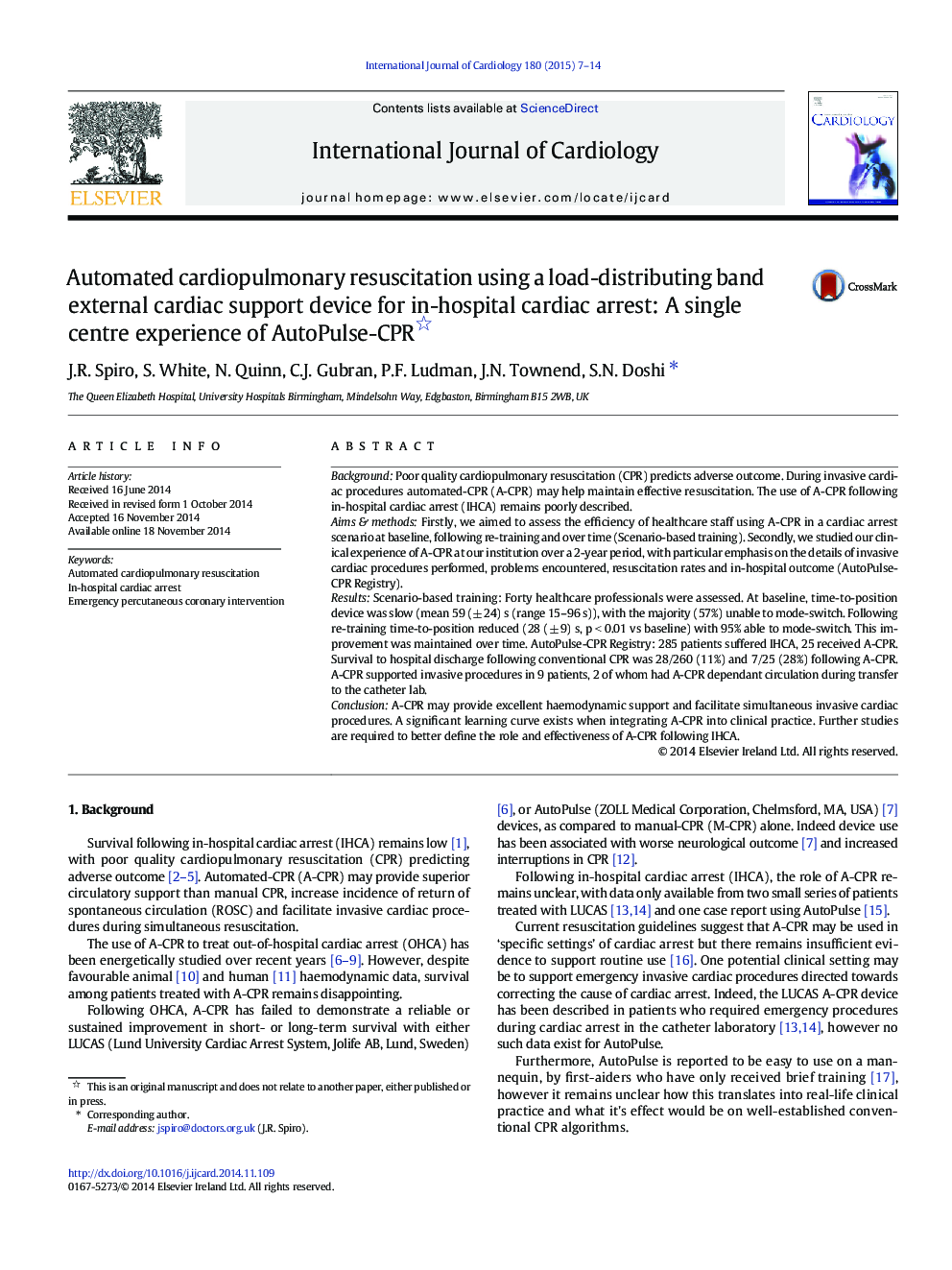| کد مقاله | کد نشریه | سال انتشار | مقاله انگلیسی | نسخه تمام متن |
|---|---|---|---|---|
| 5968738 | 1576172 | 2015 | 8 صفحه PDF | دانلود رایگان |

- We describe a 2-year experience of using automated-CPR for in-hospital cardiac arrest in a busy tertiary cardiology unit.
- We emphasise the importance of scenario based re-training to maintain the efficiency of resuscitation.
- Practical problems encountered when using the device have been highlighted.
- Successful outcomes are described in patients transferred to the catheter lab with automated-CPR dependent circulations.
- We describe the feasibility of performing simultaneous invasive cardiac procedures during automated-CPR.
BackgroundPoor quality cardiopulmonary resuscitation (CPR) predicts adverse outcome. During invasive cardiac procedures automated-CPR (A-CPR) may help maintain effective resuscitation. The use of A-CPR following in-hospital cardiac arrest (IHCA) remains poorly described.Aims & methodsFirstly, we aimed to assess the efficiency of healthcare staff using A-CPR in a cardiac arrest scenario at baseline, following re-training and over time (Scenario-based training). Secondly, we studied our clinical experience of A-CPR at our institution over a 2-year period, with particular emphasis on the details of invasive cardiac procedures performed, problems encountered, resuscitation rates and in-hospital outcome (AutoPulse-CPR Registry).ResultsScenario-based training: Forty healthcare professionals were assessed. At baseline, time-to-position device was slow (mean 59 (± 24) s (range 15-96 s)), with the majority (57%) unable to mode-switch. Following re-training time-to-position reduced (28 (± 9) s, p < 0.01 vs baseline) with 95% able to mode-switch. This improvement was maintained over time. AutoPulse-CPR Registry: 285 patients suffered IHCA, 25 received A-CPR. Survival to hospital discharge following conventional CPR was 28/260 (11%) and 7/25 (28%) following A-CPR. A-CPR supported invasive procedures in 9 patients, 2 of whom had A-CPR dependant circulation during transfer to the catheter lab.ConclusionA-CPR may provide excellent haemodynamic support and facilitate simultaneous invasive cardiac procedures. A significant learning curve exists when integrating A-CPR into clinical practice. Further studies are required to better define the role and effectiveness of A-CPR following IHCA.
Journal: International Journal of Cardiology - Volume 180, 1 February 2015, Pages 7-14